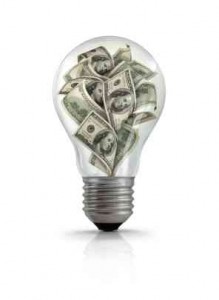This is a frequent question but not one with an easy answer. Before we deal with it, though, let’s try to answer another, related question: Can a pending patent application have value?
Although a pending patent application provides no enforceable legal rights, it may still have value as an asset. The value of a pending application relates to the expectation as to whether the patent will issue and how broad the issued claims will be, if it does. Also, there may be some value in marking a product with the term “patent pending” .
So, how does one value an intangible asset such as a patent or a pending patent application?
There are three main approaches:
Market Approach
This is similar to how one values real estate. The real estate appraiser looks at sales of similar houses in the neighborhood, and then comes up with an estimate. In the case of intellectual property, the appraiser looks at licensing agreements / sales for similar intellectual properties. For instance, in the toy industry, it may be very common for toys to be licensed for 5% royalty of gross sales. If that’s the case, the “value” for a license for a baby doll will be deemed “5% of gross sales”.
Cost Approach
In the cost approach, the value of the asset is determined by the amount it would cost to replace the item. This is an approach that is used in high tech industries, where the value of the asset is (at least in part) determined on the basis of R&D cost.
Income Approach
This approach looks at the income-producing capability of the asset. The value of the asset is determined based on the future income stream over its lifetime, discounted to the net present value. Of course, the income amount used will be an estimate.
In practice, if the item has a clearly defined income-stream, then the income approach will most likely be used. However, many times, it will be difficult to estimate future income from a product. On the other hand, if the industry has a well defined set of royalty rates, then these will probably be used to determine the asset’s value. Often a “hybrid” approach will be used.
It is also worth noting that there may be fundamental differences of opinion as to how much an asset is worth. An inventor may believe that his or her invention is worth far more than the appraised value, based on a different set of assumptions as to future sales, for example.
Ultimately, the actual value of a patent (or other asset) (sale or license) will be whatever the parties agree on.
For more information, see:
From Assets to Profits: Competing for IP Value and Return (Intellectual Property-General, Law, Accounting & Finance, Management, Licensing, Special Topics) by Bruce Berman (John Wiley and Sons, Inc. 2008).
Fundamentals of Intellectual Property Valuation: A Primer for Identifying and Determining Value by Wes Anson and Donna Suchy (American Bar Association 2005).

